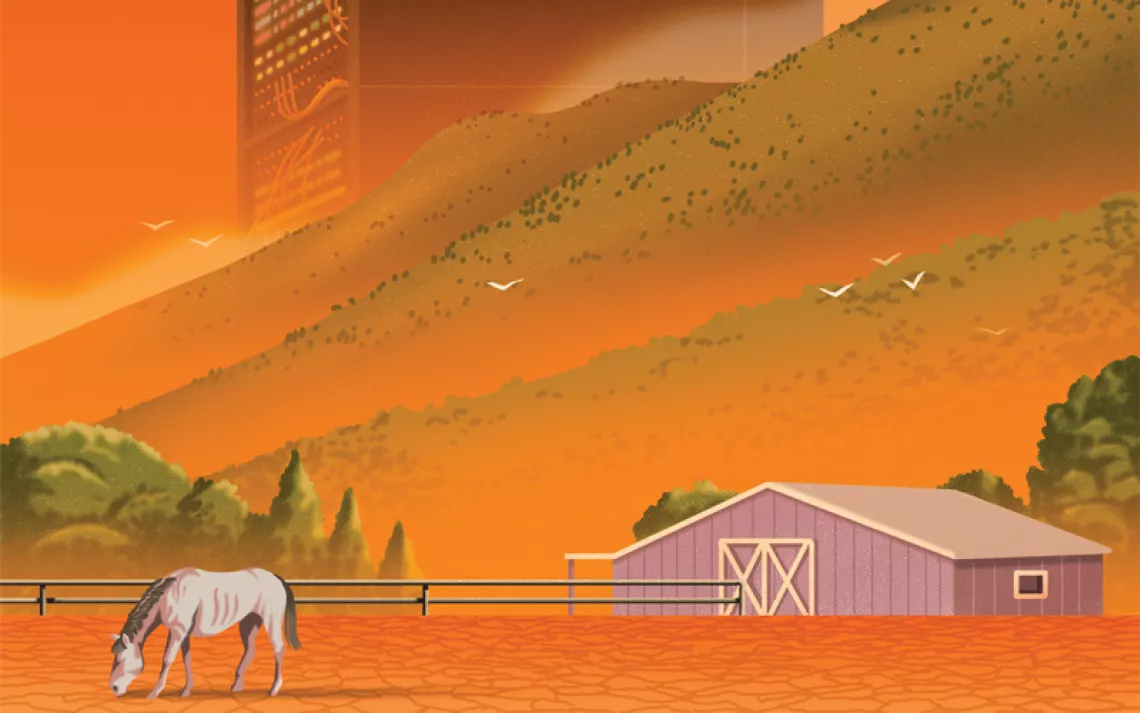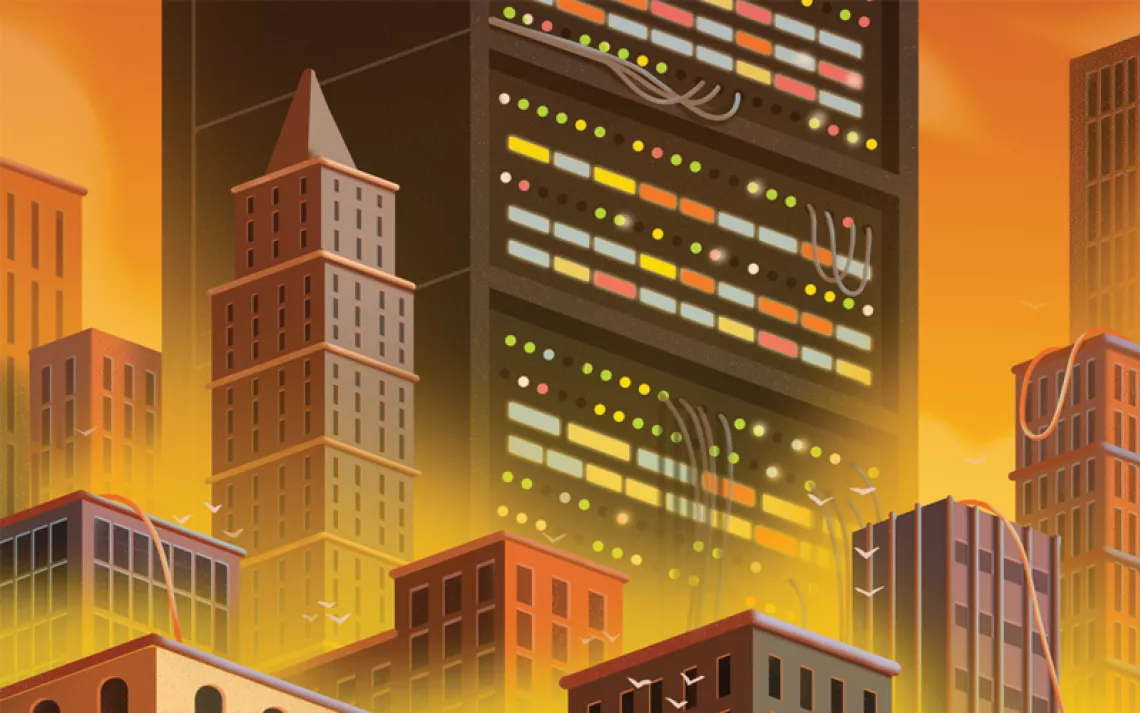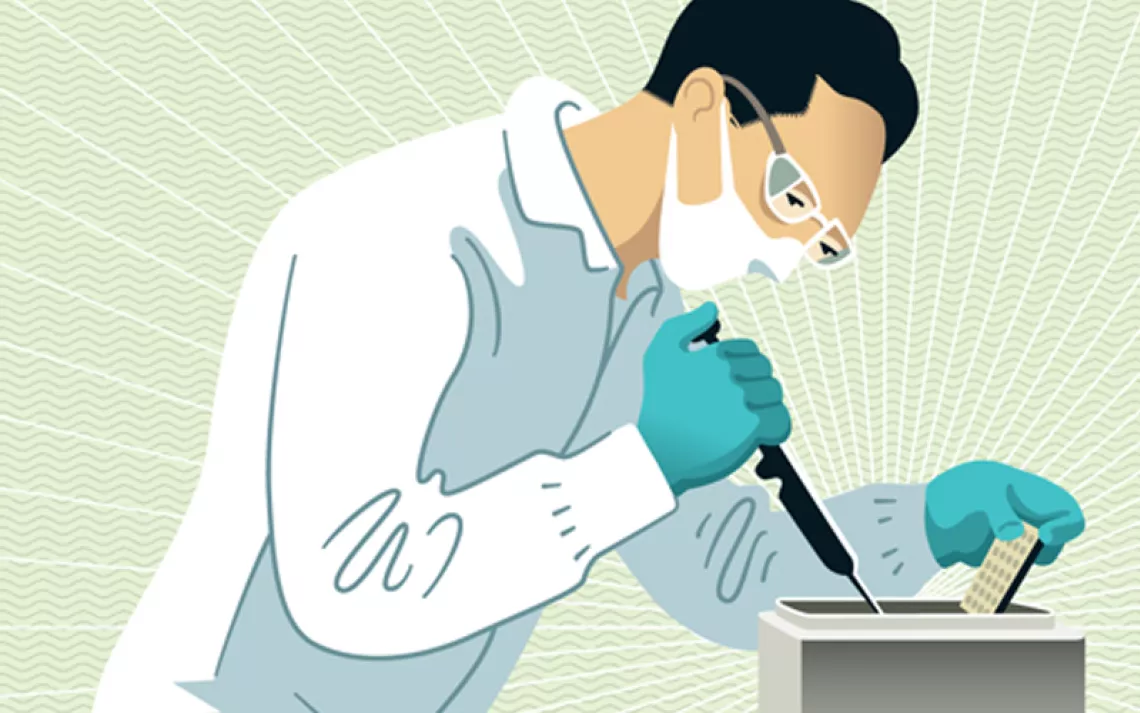The Trees Have Eyes
Are AI and electronic surveillance the solution to plant poaching?

A California wildlife officer with seized dudleya. Could trail cameras have prevented the poaching? Photo courtesy California Department of Fish and Wildlife.A wildlife officer with seized dudleya.
In recent years, the poaching of rare and valuable plants has become a troubling new problem for public lands managers. While it often gets less attention than wildlife and large game poaching, plant theft’s effects on biodiversity can be similarly devastating. There are laws in place that protect plants as well as animals from being taken, but monitoring large tracts of land has proved difficult, especially for protected areas that are already strapped for resources. The World Bank estimates that up to $2 trillion in economic damage is caused each year from the illegal trade of endangered and valuable plant species.
Land managers are doing what they can. In the American Southwest, rangers have inserted microchips into cacti at Saguaro National Park to track them if they’re sold on the black market. The locations of some rare and endangered plant populations are kept secret from the public. In California and elsewhere, law enforcement has ratcheted up punishments for plant poaching. Earlier in 2022, a South Korean national was sentenced to two years in prison for attempting to illegally export poached wild dudleya succulents.
Goldenseal and ginseng are commonly poached in remote areas for their medicinal properties and have consequently found their way onto endangered species lists in many places. Since land managers often lack the resources and personnel to stop poaching, some in both the public and private sectors are starting to look at “force multiplier” solutions.
A few companies now offer surveillance systems and software that claim to recognize wildlife poachers, one of which is TrailGuard AI. The technology was piloted with success in India and South Africa and is being scaled up for commercial use. The TrailGuard system is a small camera the size of an index finger, whose artificial intelligence, the company claims, can recognize suspected poachers and relay that information to park rangers.
TrailGuard’s camera wakes up when there is movement in front of its infrared sensor. In 250 milliseconds, it can grab roughly four images of a person going by. The camera can recognize a target any angle, allowing it to be perched in trees to avoid detection or destruction. Once the photos are taken, the AI algorithm stored in its hardware determines if the subject is a human being, logging truck, or whatever it is trained to recognize. If it finds a match, the camera would cable the communications unit that would send the information to a the cell network, to the internet, to the forest ranger station, all in approximately 30 seconds.
Dr. Eric Dinerstein, Director of WildTech at RESOLVE, the company behind TrailGuard, said the technology could be used for various anti-poaching strategies. If the park had sufficient labor resources, it could mount a rapid response according to the information received from the camera and attempt to stop poaching before it happens. In cases where resources are limited, Dinerstein suggested that rangers could use the information to get an idea of where the poaching pressure is, and increase patrols and signage to limit damage or build a case in court to show willful wrongdoing.
In places like national forests, of course, anyone is welcome to walk through unrestricted, which would make it difficult to distinguish between hikers, adventurers, scientists, and plant rustlers. Dinerstein said that technologies like Trailguard are more effective in places where access is restricted, like preserves, where visitors are not allowed to wander freely.
Thus far, most anti-poaching surveillance systems and AI have focused on wildlife poaching, illegal logging, and preventing human-animal conflict. It has not yet been widely implemented on protecting rare or endangered plants and preventing plant smuggling. Dinerstein hopes that can change in the near future. If implemented successfully, he said, parks with very limited protection staff could have more tools to protect endangered and valuable plants.
Some are skeptical on that point. Alice Brandon, Resource Programming Manager at Forest Preserves of Cook County in Illinois, sees the limited resources of many parks and land preserves as a major barrier. Who, she wonders, would monitor the hundreds of cameras? “I don’t know of any agency that has the people power to do that,” she said.
Instead, Brandon said that better funded and equipped conservation police enforcement and higher fines are needed to make it more painful to make big bucks selling plants and animals.
“If one is harvesting rare and endangered plants for the black market, the [current] fine is way below the profit made on selling the plants,” she said. “Even when the poacher is caught, judges often dismiss the case due to a lack of awareness of the extinction crisis and due to plant blindness.”
 The Magazine of The Sierra Club
The Magazine of The Sierra Club



